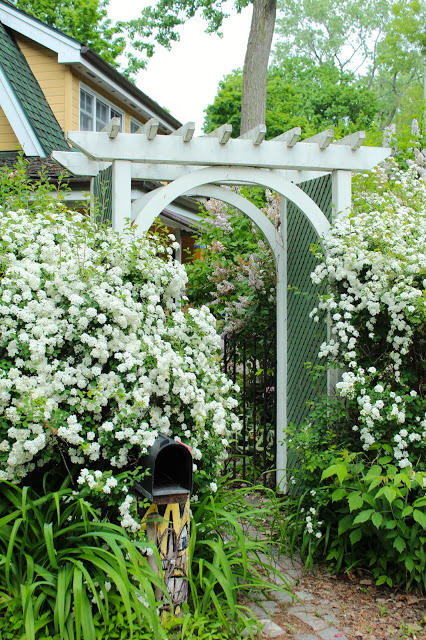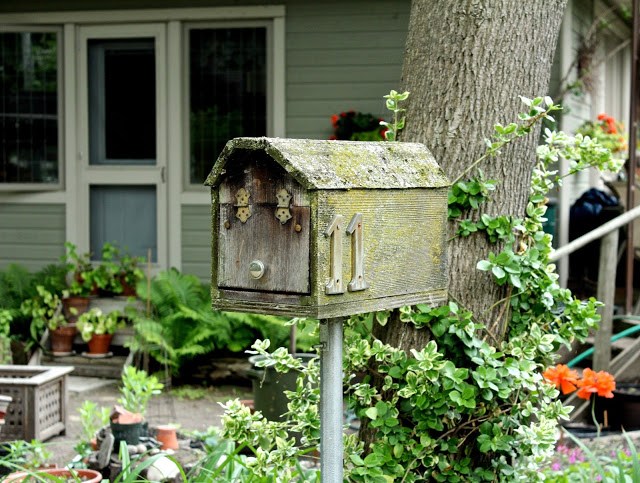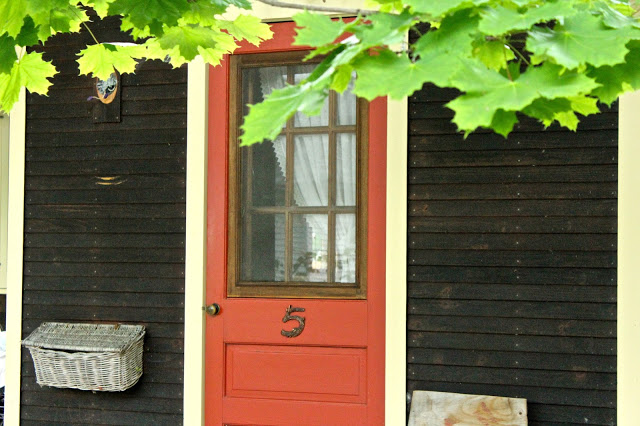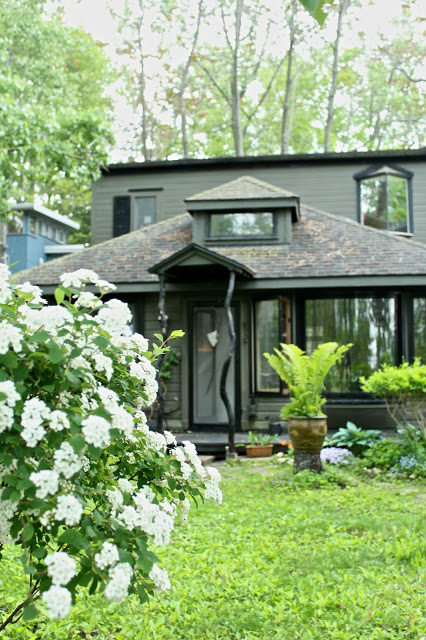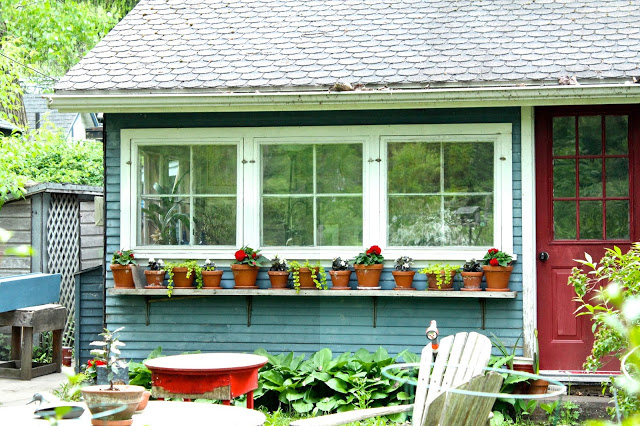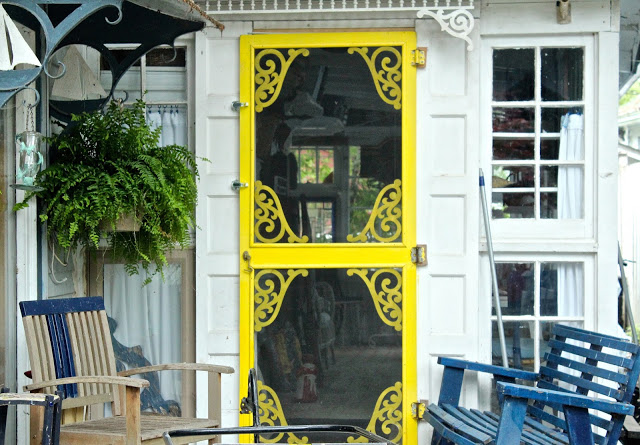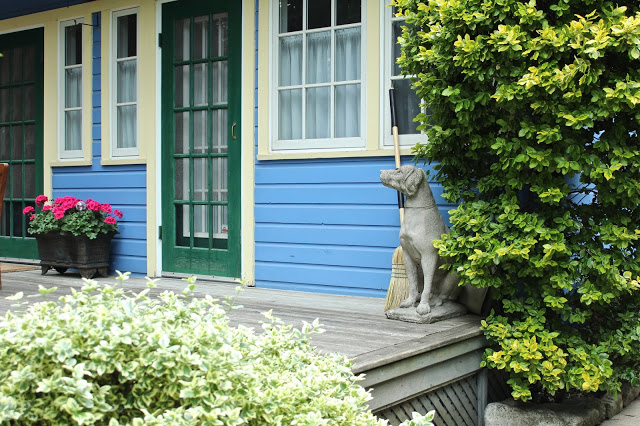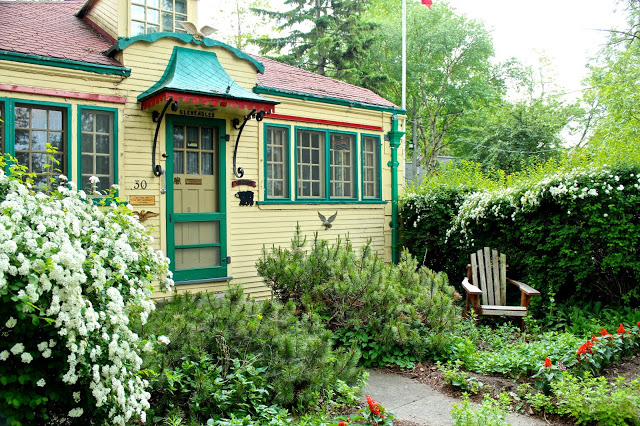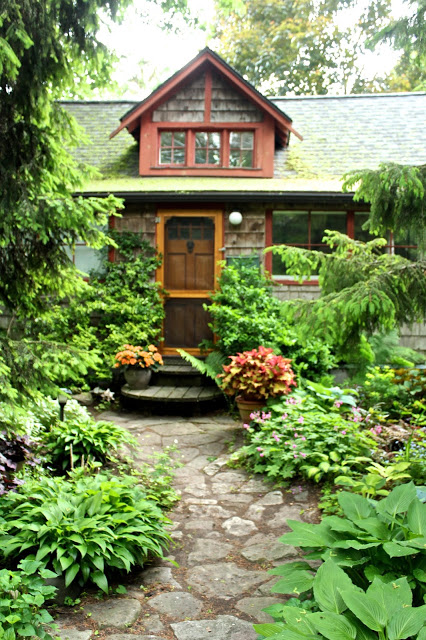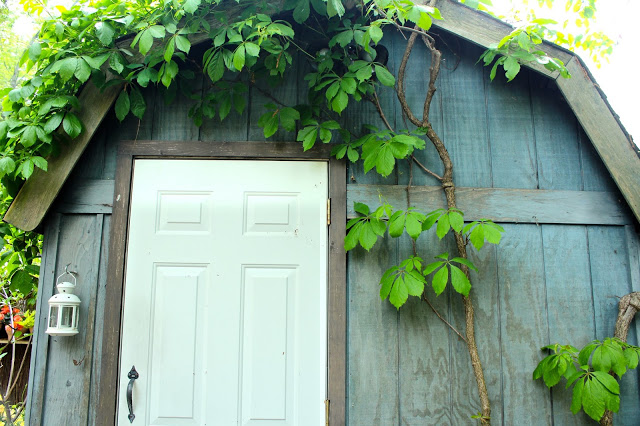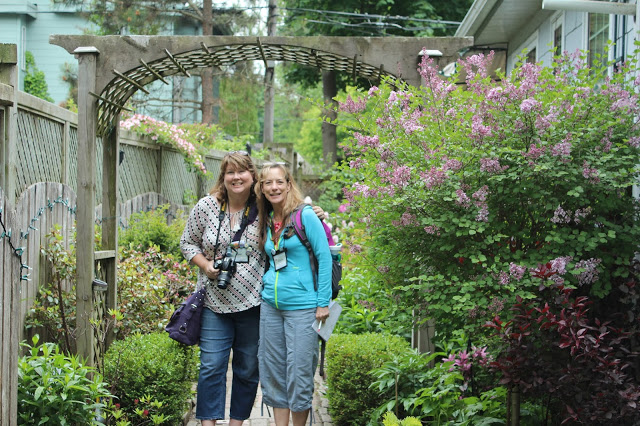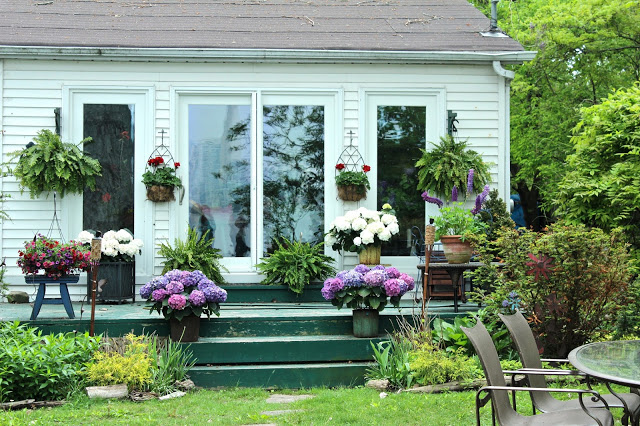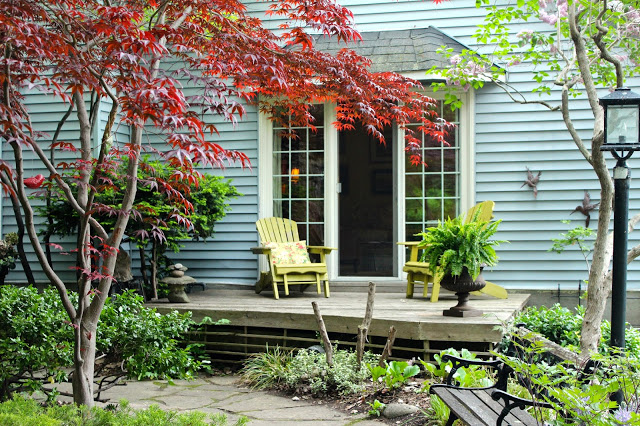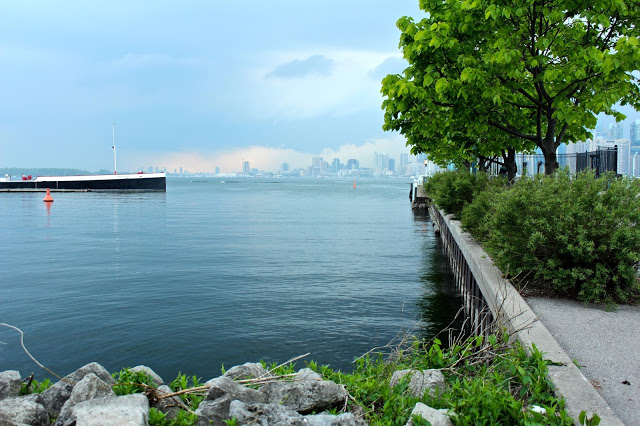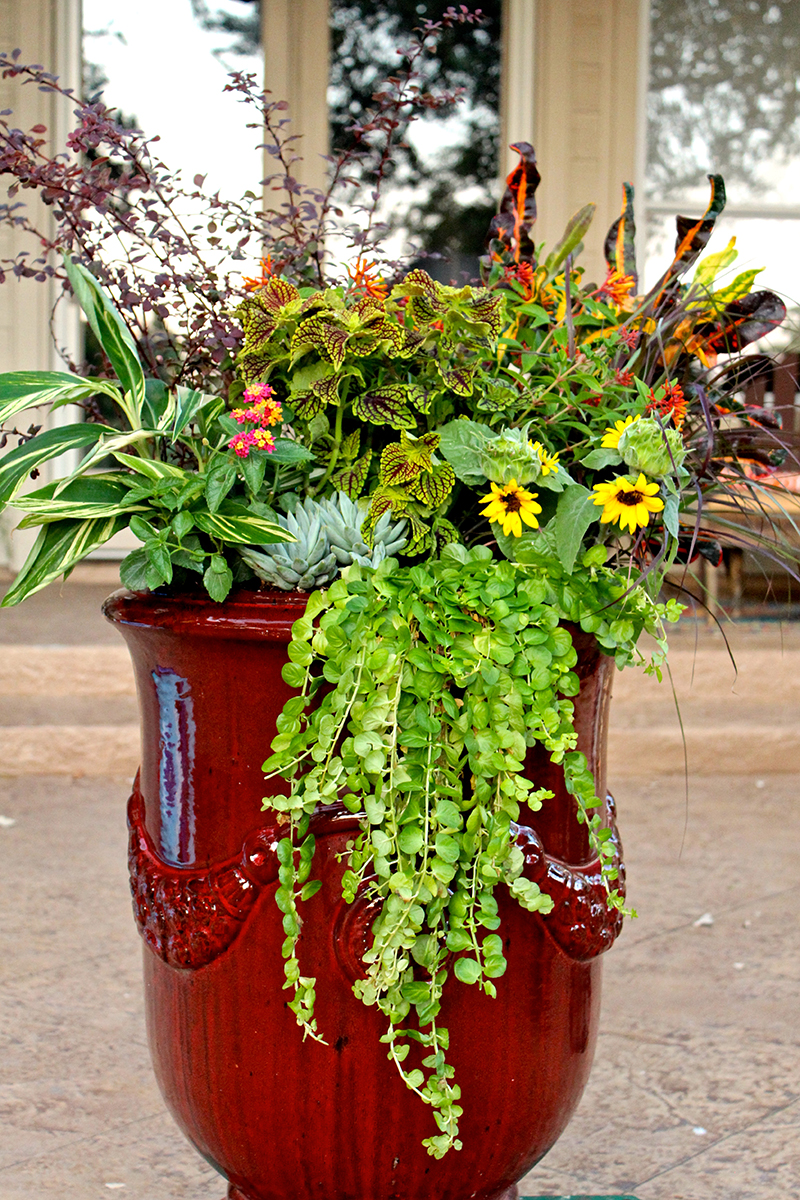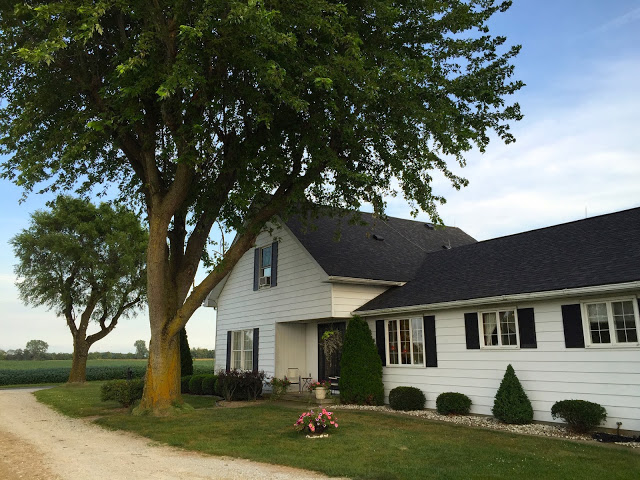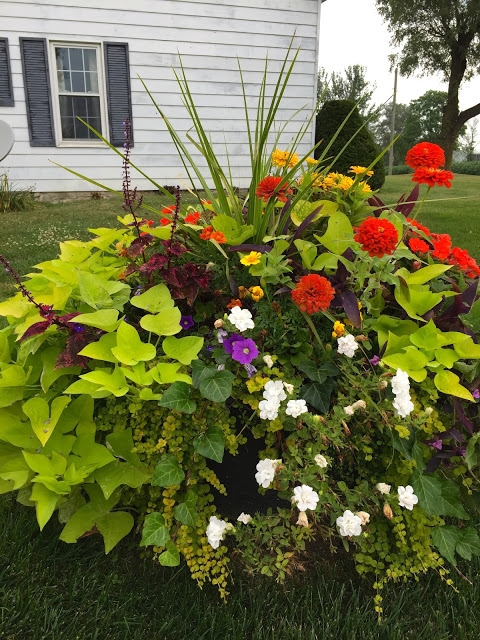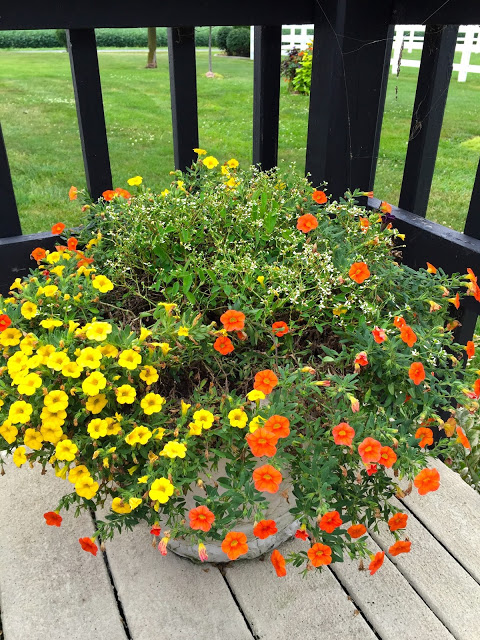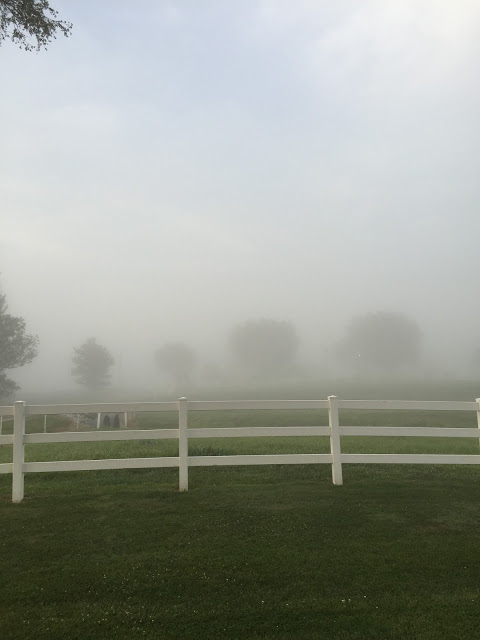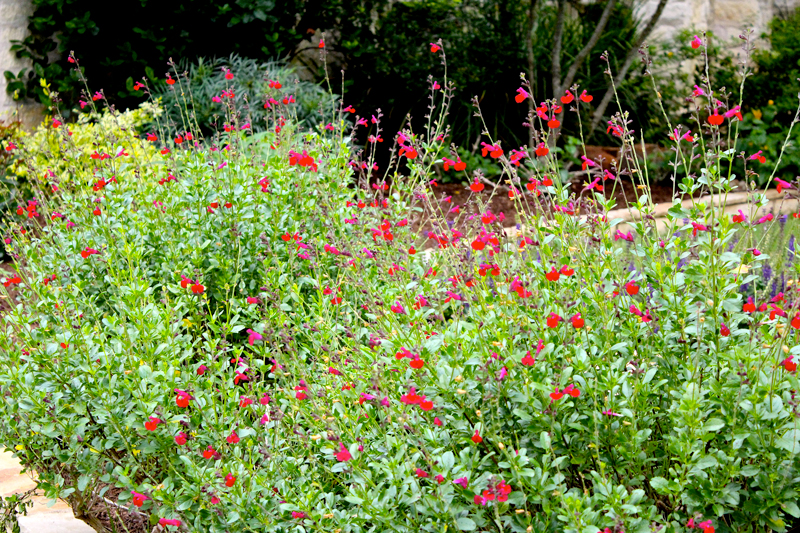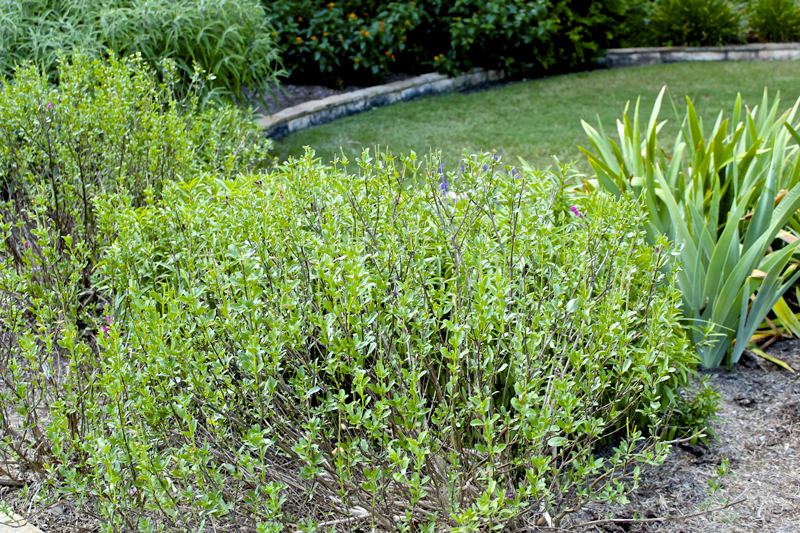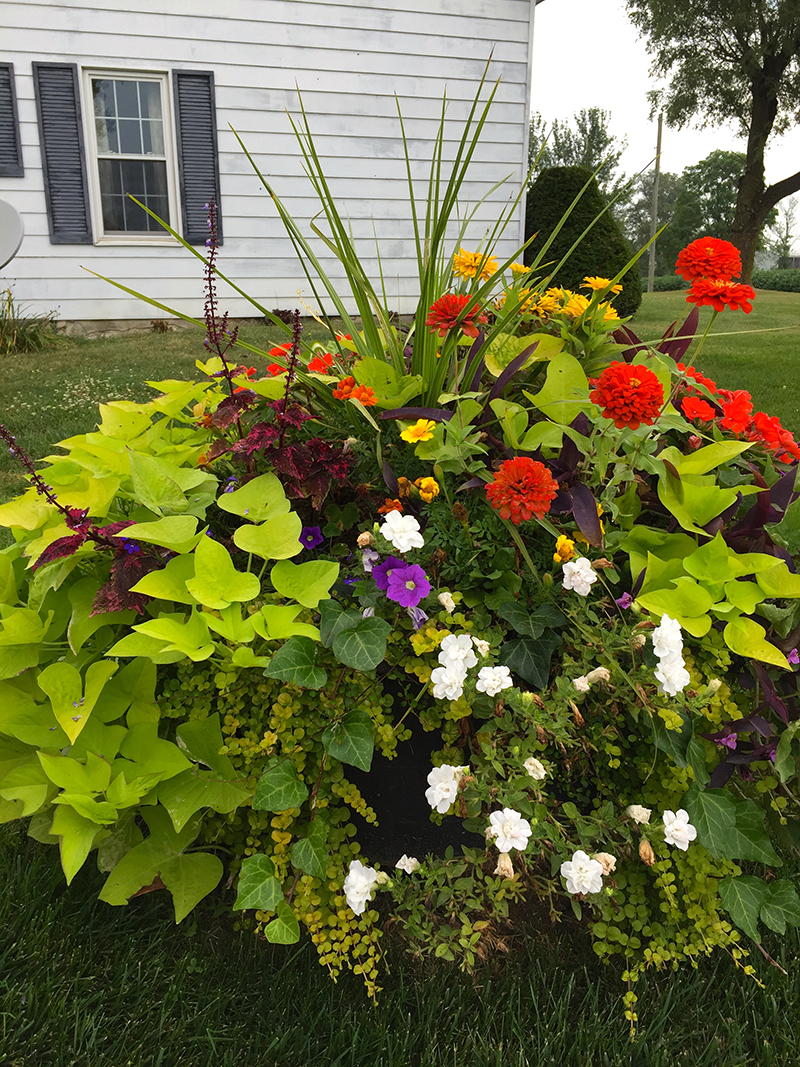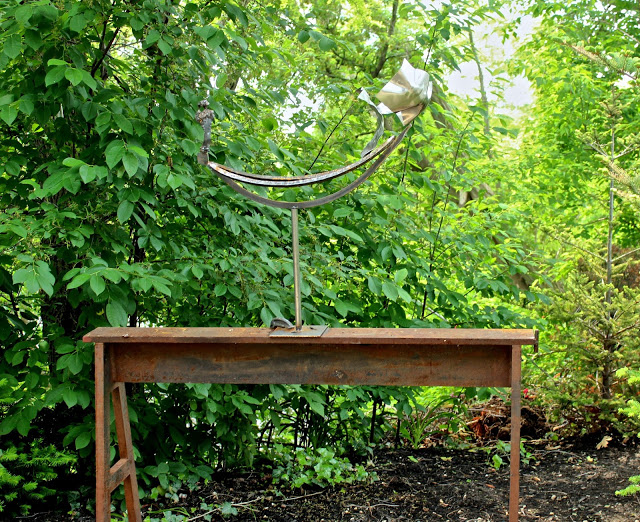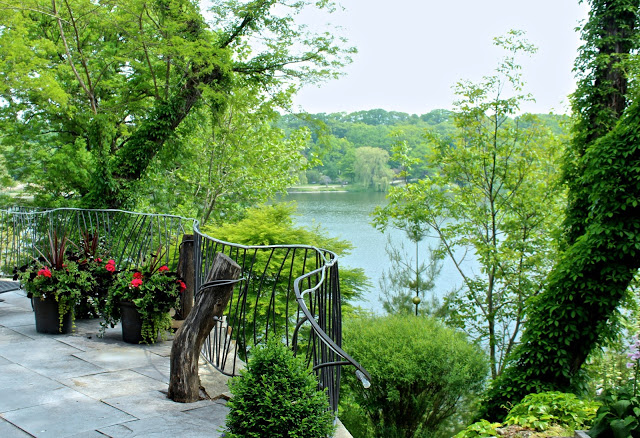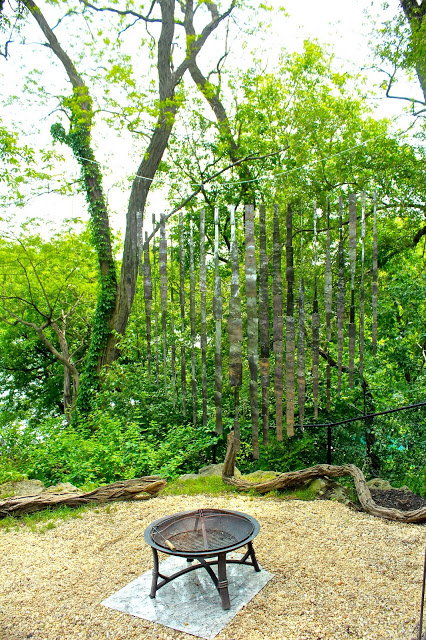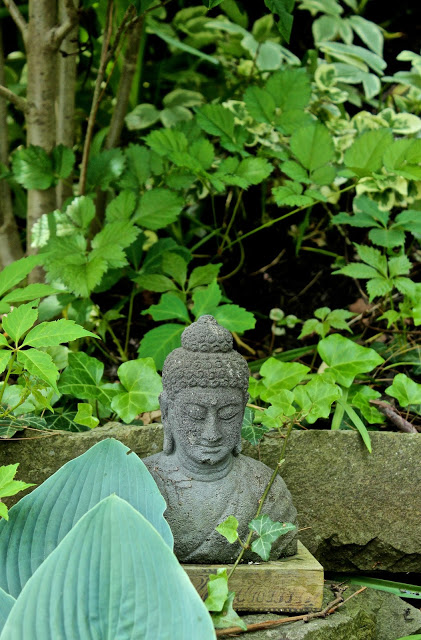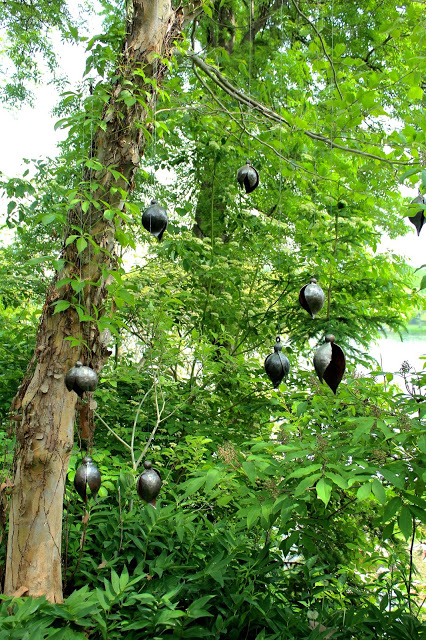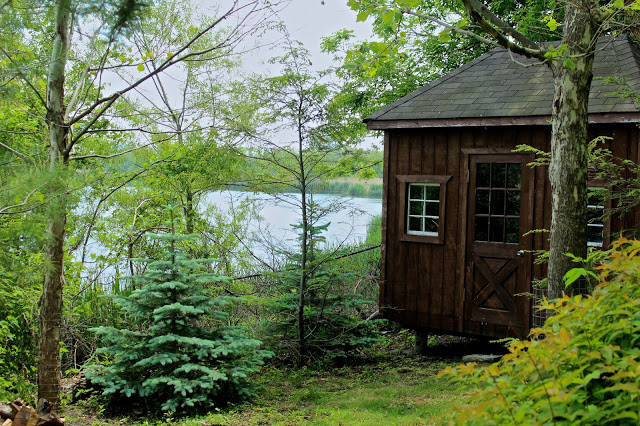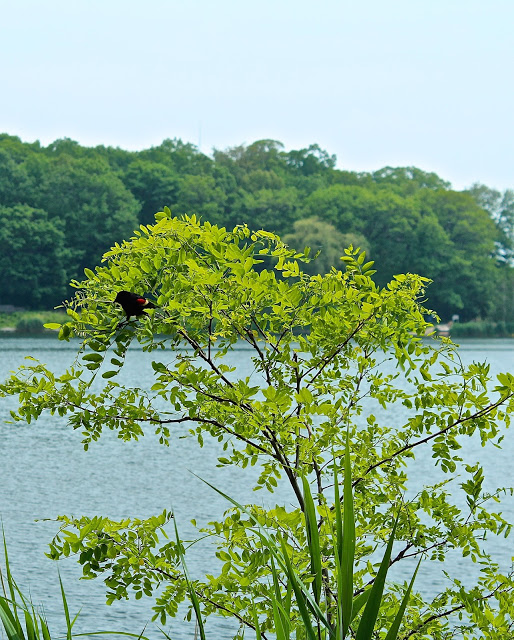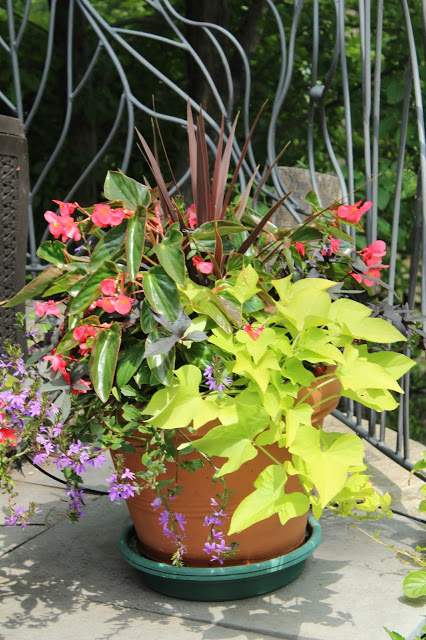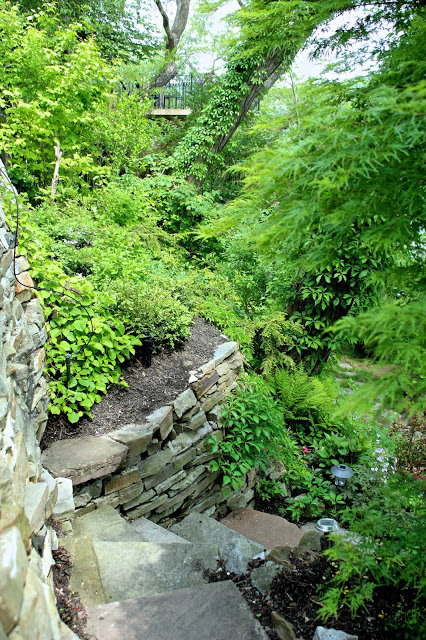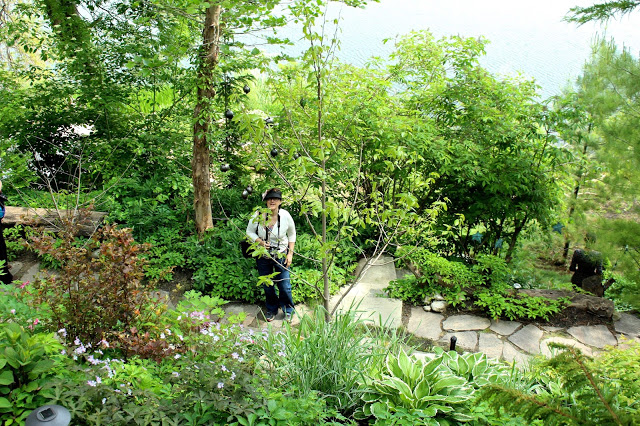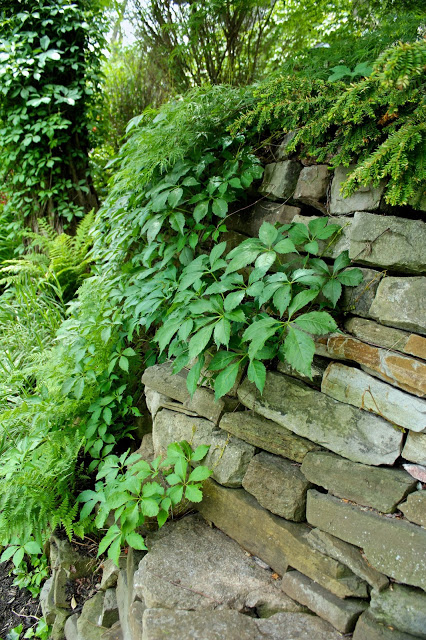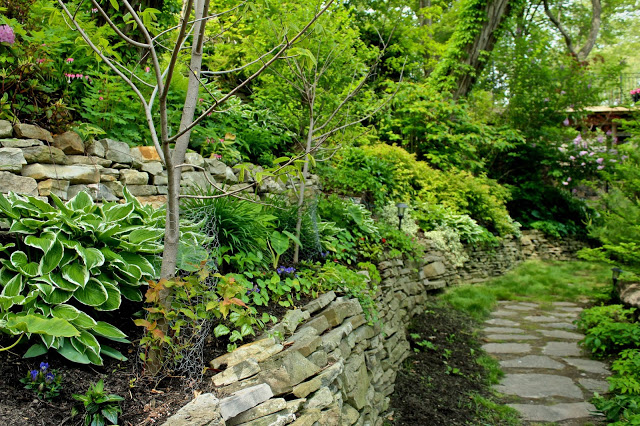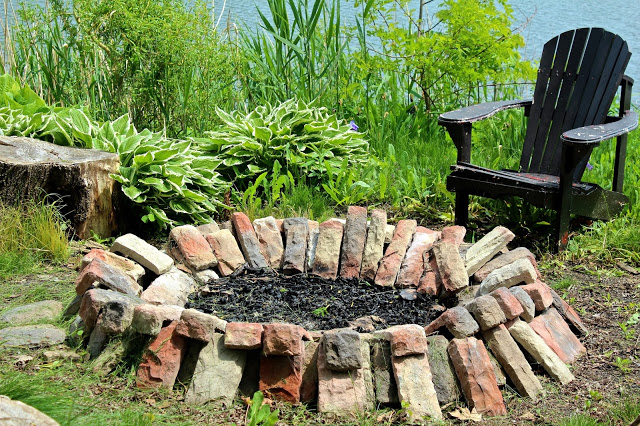Hop aboard the ferry to Ward’s Island – where cozy cottages welcome Garden Bloggers Fling attendees…
One of my favorite adventures at this year’s Garden Bloggers Fling in Toronto was our trek to Wards Island. An eclectic community, it actually consists of two islands — Ward’s and Algonquin, connected to each other by a small bridge. There are no vehicles permitted on the island, so residents have to shop in the city and be creative about how they ferry everything back across the water. We saw many bicycles with creative additions, like this set up, designed to pack as much as possible per trip.
Our ferry ride was short and sweet — the way I like it since I have just a smidge of motion sickness. It was a grey, blustery day, and we were layered up under the dark skies.
The view of Toronto back across Lake Ontario was amazing, and stood in stark contrast to colorful the homes and gardens we were about to visit.
Residents, visitors and a slew of eager garden bloggers flock off of the ferry.
The small, mostly cottage-style homes, while varying greatly in their makeup, were all welcoming as we toured up and down the islands’ quaint streets.
Evident throughout the islands, the reduce, reuse and recycle mantra is a way of life for those for whom a trip to Home Depot to grab a few simple building supplies isn’t so simple.
Houses sported bright colors and creative decor…
…and beautiful, lovingly cared-for plants.
Islanders don’t actually own their property; they have 99-year leases on the land. A long waiting list means others wanting to move onto the islands where time almost seems to stand still will need decades of patience.
Around every corner, pops of color, decor and art make each home unique.
Even while under construction, this house has donned a pretty face.
Welcoming adirondack chairs evoke images of neighbors enjoying an evening outside.
I love how these tasty-looking tangerine blooms echo the color of the front door.
Hostas and other woodland plants line this stone path leading to the front door.
Many of the cottage homes with country charm remind me of times long past.
Even this storage building exudes charm – complete with gentle paint colors, a climbing vine and a little lantern to light the way.
Two of my Texas blogging friends, Pam of Digging and Chris of Running Gardener, enjoy strolling together through these lovely gardens.
Gardening Up! And just look at those hydrangeas.
This scene seems to say, “come and sit a spell.”
A storm is brewing over the city.
The rain and the winds picked up and we got drenched running back to board the ferry and then walk to our hotel. But, we were all in it together, laughing and taking it in stride.
Hidden gems, Ward’s and Algonquin islands — their inhabitants and gardens — welcomed us with open arms and gave us a day of delightful gardening touring.





